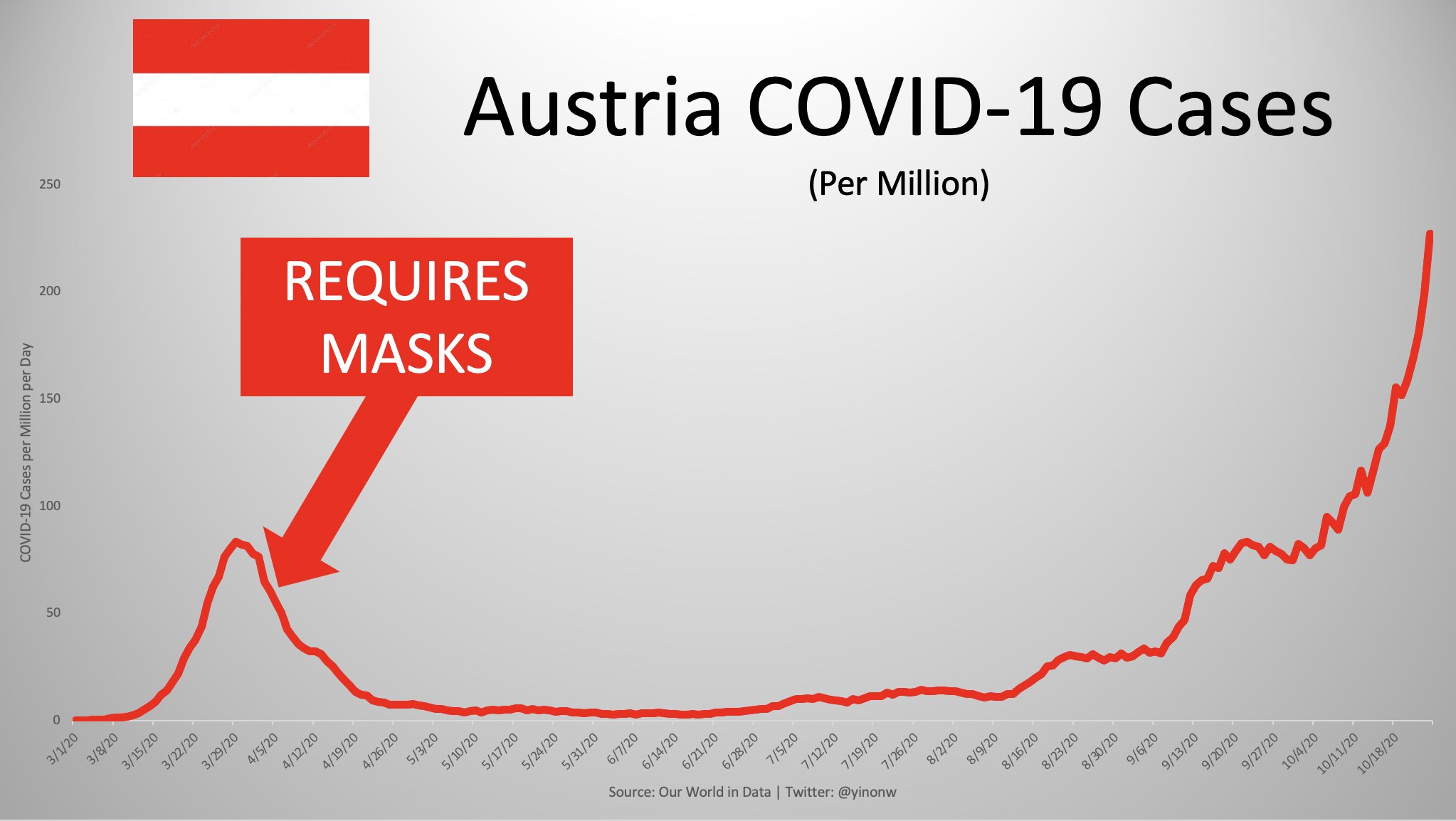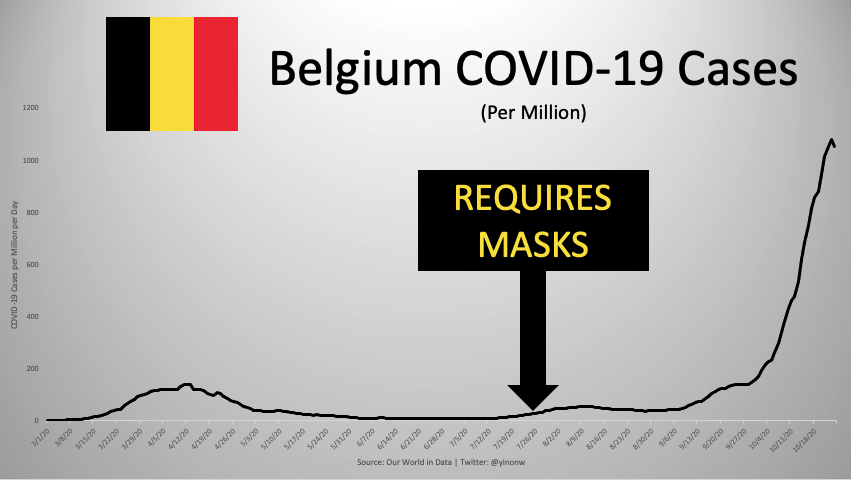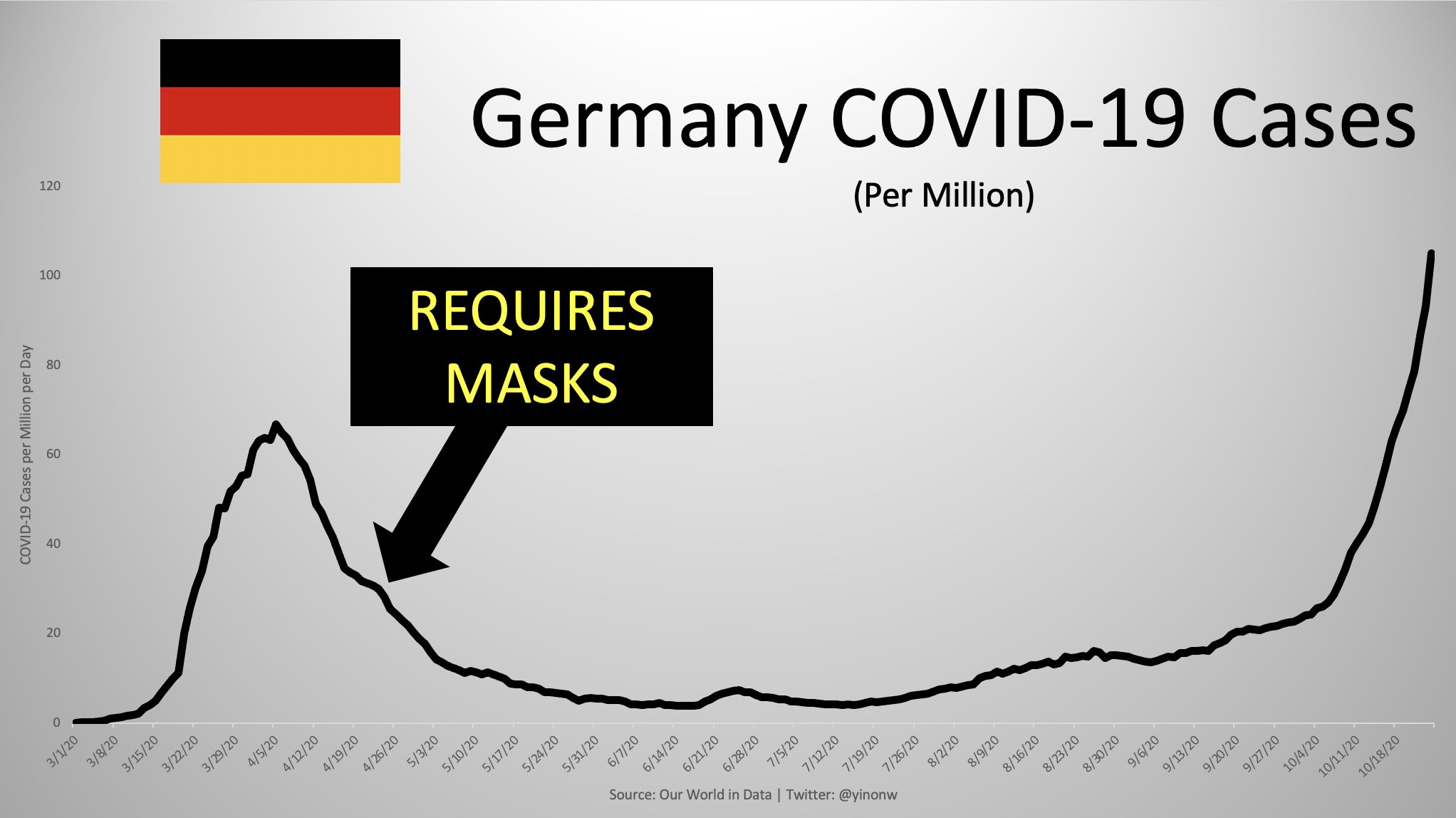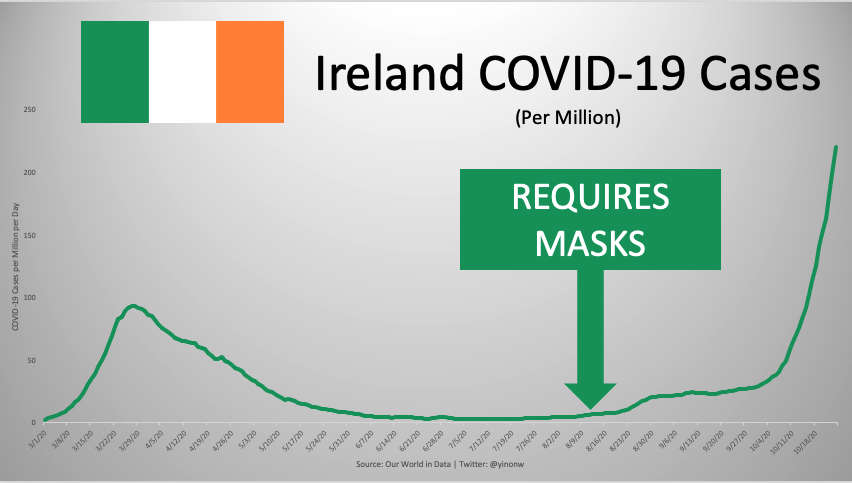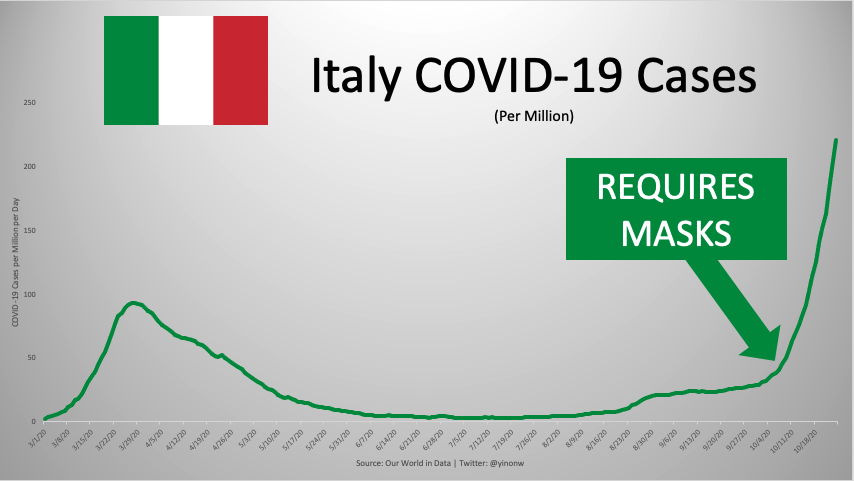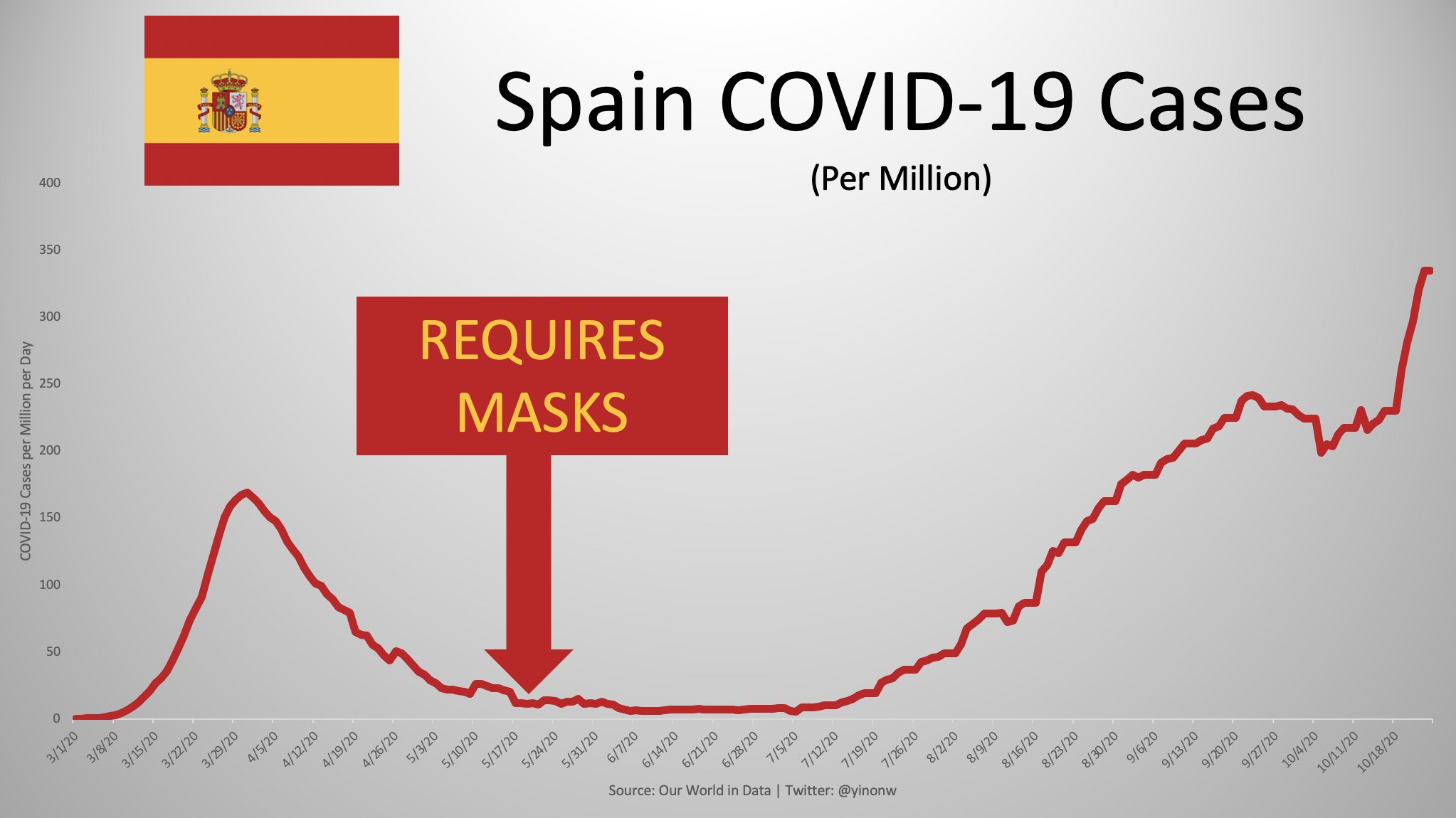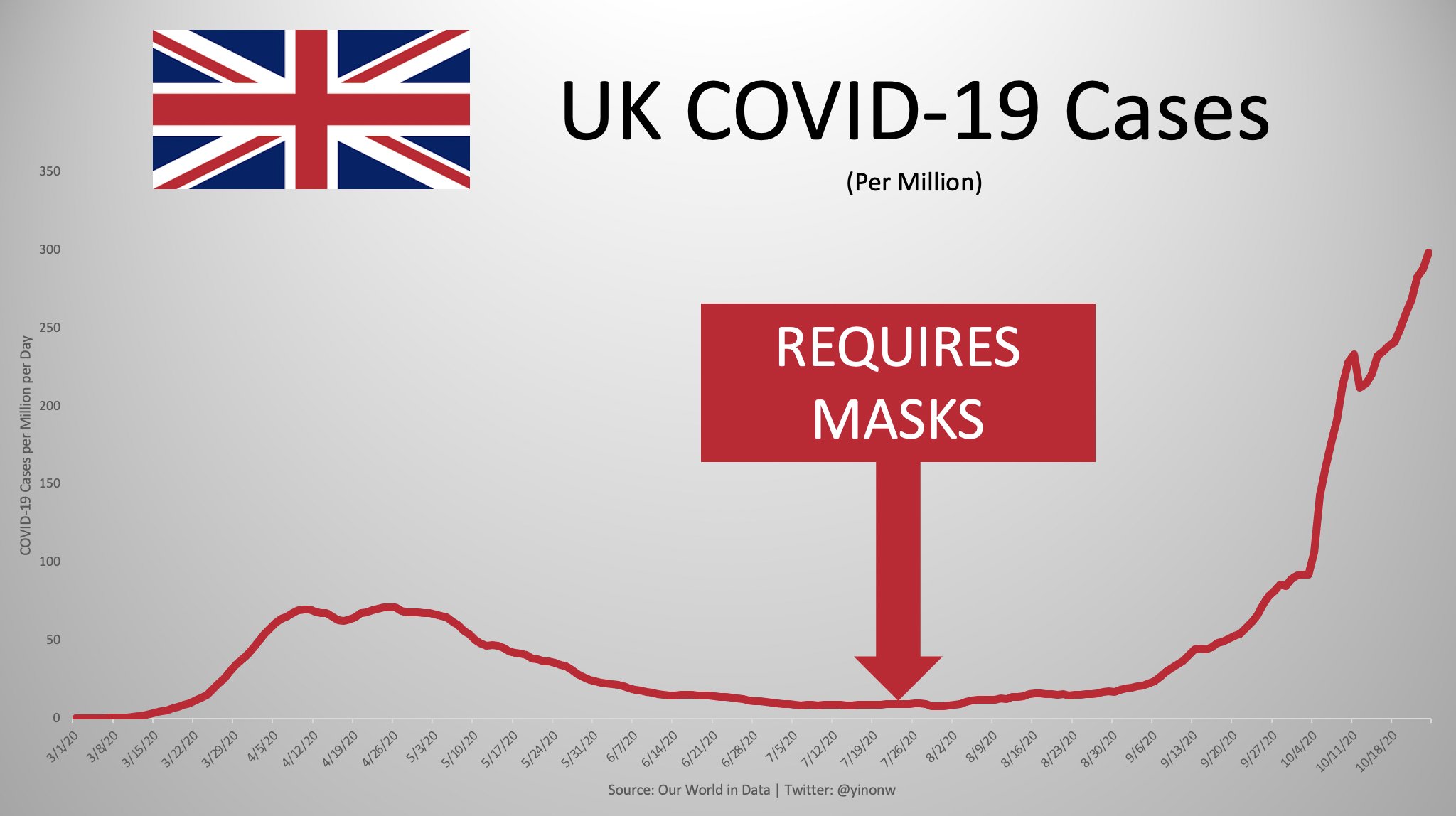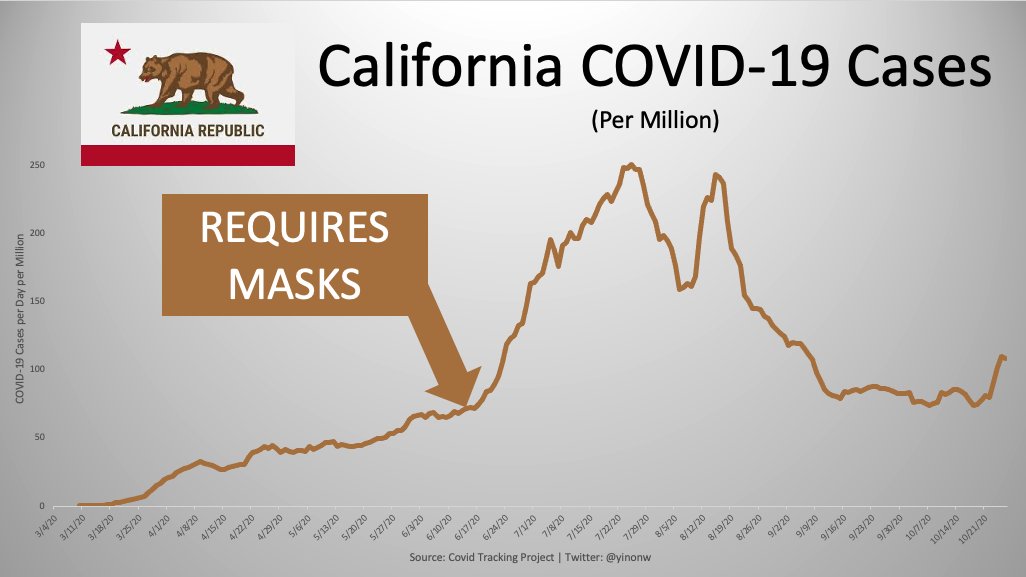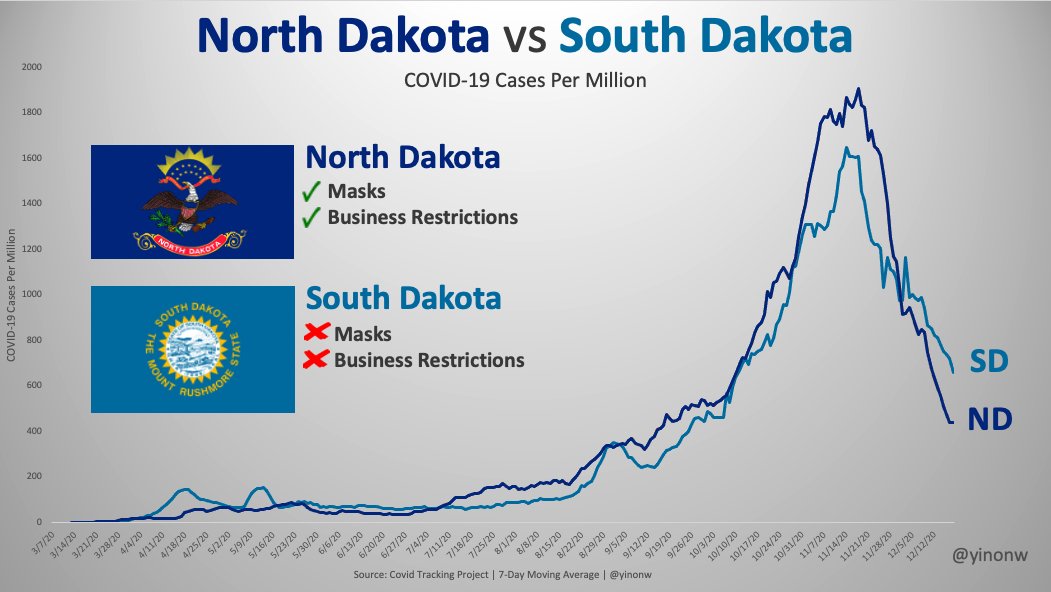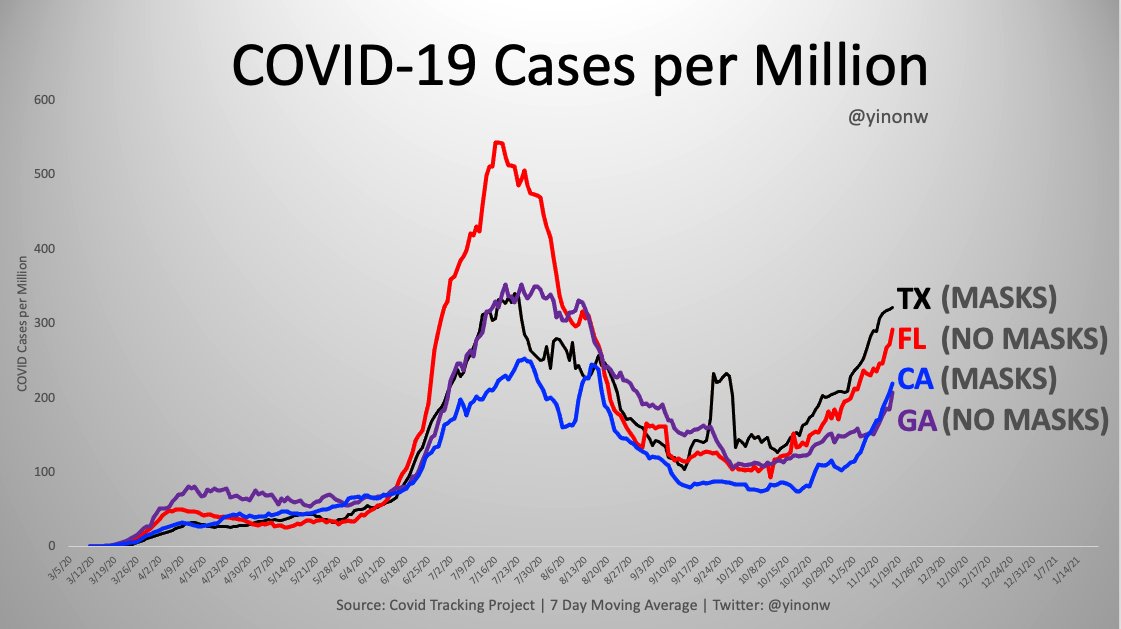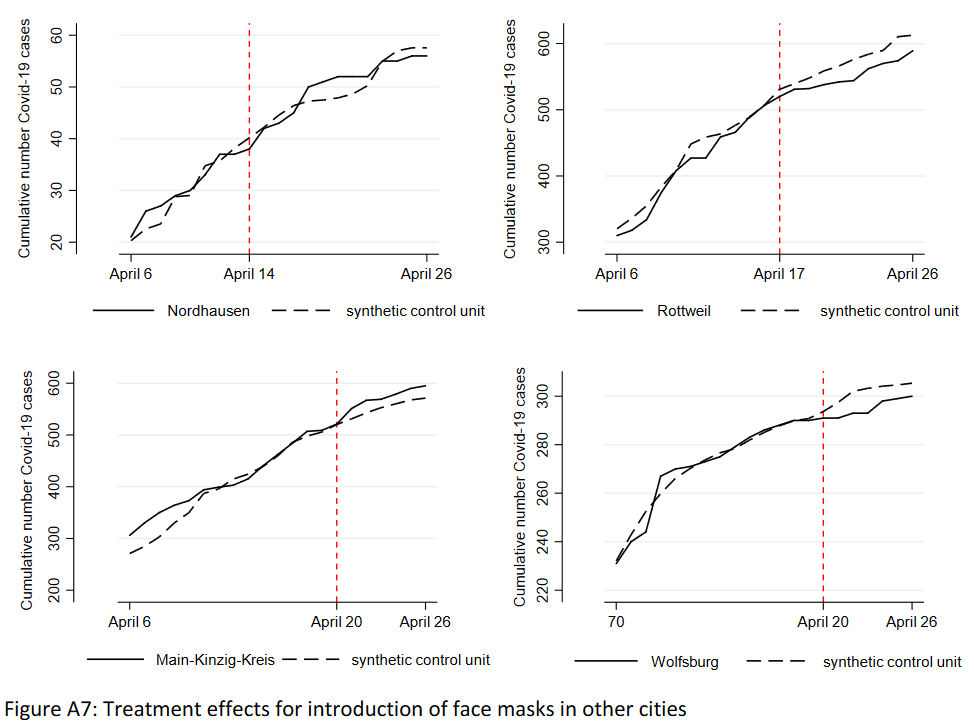- Joined
- Jul 10, 2008
- Messages
- 64,749
- Points
- 113
liar liar pants on fire
https://www.factcheck.org/2021/02/scicheck-video-wrong-about-fauci-covid-19/
Video Wrong About Fauci, COVID-19
By Jessica McDonald, D'Angelo Gore and Eugene Kiely
Posted on February 3, 2021
THIS ARTICLE IS AVAILABLE IN BOTH ENGLISH AND ESPAÑOL English Español
Quick Take
A video from conservative commentator Liz Wheeler falsely claims the nation’s top infectious disease expert, Dr. Anthony Fauci, repeatedly “lied” to the American public about the COVID-19 pandemic. She also misleads about COVID-19 vaccination prioritization and distorts the findings of a scientific paper to argue that face masks do not need to be worn by healthy people.
Full Story
In a video titled “Fauci lied to you AGAIN,” conservative commentator Liz Wheeler makes a series of false claims about Dr. Anthony Fauci, the director of the National Institute of Allergy and Infectious Diseases and one of the government’s most prominent experts on the coronavirus.
The Fauci-focused video, which runs nearly four minutes long and has accumulated more than 1.7 million views on Facebook since being posted in early January, also features Wheeler posing several questions about COVID-19 vaccination or mask use. As we’ll explain, her responses are misleading and contain inaccurate information.
Wheeler is a former television host on the One America News Network, a conservative cable channel known for being a favorite of former President Donald Trump and for spreading false information.
The Case Fatality Rate
The video starts with Wheeler falsely claiming that Fauci “lied” about the COVID-19 case fatality rate.
“First, Dr. Anthony Fauci said that the COVID-19 case fatality rates was 3.6%. That turned out to be a lie,” she said. “The actual fatality rate of the virus is probably less than 1%.”
We could find no instance of Fauci misrepresenting the case fatality rate, or ratio, which is the percentage of those with confirmed cases who have died. In fact, we found the opposite.
Before the U.S. had even reported its first COVID-19 death, Fauci co-authored a Feb. 28 editorial in the New England Journal of Medicine that said the case fatality rate is probably “considerably less than 1%.” At the time, the rate was about 2%.
“If one assumes that the number of asymptomatic or minimally symptomatic cases is several times as high as the number of reported cases, the case fatality rate may be considerably less than 1%,” according to the editorial co-authored by Fauci and two others federal health officials, including the director of the Centers for Disease Control and Prevention.
Less than a month later, Fauci noted at a House committee hearing on March 11 that the case fatality rate then was up from 2% to 3% — but he still maintained that the true rate was much lower than that. Again, he stated that the case fatality rate misses “all the cases of minimally symptomatic or asymptomatic infection.”
It is important to note that the case fatality rate is a simplistic measure that merely divides COVID-19 deaths by confirmed cases. “The true severity of a disease can be described by the Infection Fatality Ratio,” which accounts for COVID-19 deaths “among all infected individuals,” as explained by the World Health Organization. It’s not lying when someone states the case fatality rate, whether it was 2%, 3% or 3.6%, and then explains why it is not an accurate measure of the severity of a disease.
False Claim About Lockdowns
Wheeler’s second purported Fauci “lie” concerns lockdowns.
“Fauci said lockdowns work. This was obviously false,” she said. “The places with the harshest lockdowns like Los Angeles and New York City have had the worst outcomes. And no, it’s not because they didn’t lock down soon enough. There is literally zero scientific evidence. And now, nine months into COVID-19, zero empirical evidence that lockdowns work to stop the virus.”
Certainly, there have been debates about whether and when to implement a lockdown — a nebulous term that has various meanings, but usually refers to movement restrictions and stay-at-home orders. Public health experts, including those at the World Health Organization, recognize that lockdowns impose high costs to society, and should be avoided whenever possible. But to claim there is zero scientific evidence that the measure works is inaccurate.
“Lockdowns are a very extreme form of the measures that we have seen have the desired effect throughout this pandemic. And there is scientific evidence that they work,” said Lauren Ancel Meyers, director of the University of Texas at Austin’s COVID-19 modeling consortium, in a phone interview.
As one example, she pointed to a study her group published in Emerging Infectious Diseases that looked at data from 58 different cities in China early on in the pandemic. “We found a very strong data-driven statistical correlation between how quickly a city acted and how quickly they were able to bring the outbreak under control,” she said.
Laura Matrajt, a research associate at the Fred Hutchinson Cancer Research Center who has modeled the effects of social distancing interventions, also told us Wheeler’s claim was “obviously … false.”
She pointed us to several studies to support the notion that lockdowns can be effective, including a rapid review of 11 European countries, which found that lockdown implementation was associated with a 82% drop in the effective reproduction number, or Rt. The measure refers to how many people on average each person with COVID-19 infects at a given time; a number above one indicates a growing epidemic, whereas a number below one means disease transmission is slowing and will eventually peter out.
According to the paper, the findings “suggest a positive effect of the containment measures on the spread of COVID-19 pandemic, with a major effect in countries where lockdown started early and was more restrictive.”
A study analyzing data from Europe and the U.S. also concluded that lockdowns likely played “a key role” in bringing epidemics under control in many places by late April. “No state had an estimated Rt below 1.0 before lockdown,” the authors wrote, “but 29 states reached an Rt below 1.0 after lockdown.”
A paper published in June in the journal Nature likewise found that “major non-pharmaceutical interventions — and lockdowns in particular — have had a large effect on reducing transmission” of the coronavirus.
A string of other studies have found similar results and other fact-checkers have debunked claims about lockdowns being ineffective.
Meyers also batted down the notion that lockdowns don’t work just because some places with bad outbreaks have implemented stricter measures.
“If we look back at what happened in the spring wave and in New York, it was the growing threat to the hospitals, the growing numbers of cases that led New York to enact its spring 2020 stay home order,” she said, noting that in many places governmental restrictions are not full lockdowns. “That initial wave did subside after people started taking precautions and staying home.”
The same pattern repeated, she said, with the surge of COVID-19 cases in the Sun Belt and in Texas over the summer and with the spike in cases and hospitalizations this winter.
“We’re seeing all over the country that as risks start increasing, policies and communication are put in place to encourage these behavioral measures,” she said, “and when they’re enacted and people adhere to those recommendations, the virus starts slowing.”
Fauci’s Comments on Masks
Wheeler falsely claims that Fauci admitted to lying when he initially said early last year that widespread use of face masks was not necessary.
She says: “Fauci also said, ‘masks don’t work, so please don’t buy them,’ he told us. This is actually probably true of cloth masks, but Fauci later admitted he lied to us to manipulate us into not buying masks so that there wouldn’t be a shortage for health care workers.”
First, Fauci did not say “masks don’t work.”
During an interview with CBS’ “60 Minutes” in March 2020, Fauci actually said that “masks are important for someone who’s infected to prevent them from infecting someone else.” But he added that face masks generally do not provide the “perfect protection” from getting infected “that people think” and so “there’s no reason to be walking around with a mask.”
Fauci still said he was “not against” anyone wearing a mask “if you want to do it.” Although, he warned that if everyone wore them it “could lead to a shortage of masks for the people who really need it,” particularly health care providers and people who were ill.
His comments were in line with CDC guidance at the time to conserve face masks for health care workers and those who had COVID-19 and had symptoms.
Then, in April, after health officials learned more about how much the virus was being transmitted by asymptomatic carriers, the CDC reversed course and began recommending that everyone wear face coverings in public. At that point, Fauci, too, began encouraging universal mask use.
Fauci later explained the reversal in a June interview with TheStreet, in which he acknowledged that concern for medical workers was a major factor in the early guidance for the public not to wear masks.
But that doesn’t mean Fauci “lied to us,” as Wheeler claims.
During a virtual event with the Washington Post in July, Fauci said that, in addition to wanting to preserve face masks for those most in need, health officials truly did not realize the degree to which infected people without symptoms were spreading the virus.
“I mean, back then, the critical issue was to save the masks for the people who really needed them because it was felt that there was a shortage of masks,” he said. “Also, we didn’t realize at all the extent of asymptomatic spread and that a person who could be without symptoms at all could inadvertently and innocently spread it to someone who was uninfected.”
Fauci added: “But what happened is that as the weeks and months came by, two things became clear: one, that there wasn’t a shortage of masks. We had plenty of masks and covering that you could put on that, plain cloth covering. That took care of that problem. Secondly, we fully realized that there were a lot of people who were asymptomatic who were spreading infection. So it became clear that we absolutely should be wearing masks consistently.”
Misleading Claim on Natural Infection
Wheeler proceeds to question why people who have previously had COVID-19 are being vaccinated — and in the process, misleadingly claims that natural infection is “better” than immunization.
“Why are people who’ve already had COVID-19 and recovered from it getting the vaccine?” she asks. “You might say, well, to protect against reinfection. But nope, according to a new study published in the New England Journal of Medicine, which followed 12,541 health care workers for 31 weeks after they’d had COVID, six months into the study they found natural immunization was solid. They found only two cases of asymptomatic reinfections. So why are we vaccinating people who’ve already recovered from COVID? They don’t seem to be at risk of reinfection and natural immunization is better than artificial immunization. It makes no sense.”
As we’ve written, many vaccines don’t provide quite as good immunity as that triggered by an infection, but that hardly means going that route is better, as contracting the disease is inherently risky. And there are numerous vaccines, such as those that protect against tetanus and human papillomavirus, or HPV, that produce superior immunity than natural infection. (For more, see our SciCheck story “Paul Misleads on Natural Infection and COVID-19 Vaccines.”)
For the coronavirus, it’s not yet known how immunity from vaccination compares with that from infection. Some initial signs suggest that the vaccines produce higher levels of infection-blocking neutralizing antibodies than those seen in patients recovering from COVID-19, but the strength and duration of immunity from both natural infection and immunization remain an area of investigation. Regardless, getting vaccinated is far safer than contracting the novel coronavirus, or SARS-CoV-2.
It’s true that people who have previously had COVID-19 likely have some immunity for a certain amount of time and therefore aren’t at high risk of becoming reinfected soon. For this reason, some experts have proposed that people who have had COVID-19 should not be prioritized for immunization.
But there’s no way to know for certain whether a person is immune — the so-called correlates of immunity have yet to be worked out for COVID-19 — and it’s unclear how long immunity might last.
As a result, the CDC website states, “Due to the severe health risks associated with COVID-19 and the fact that re-infection with COVID-19 is possible, vaccine should be offered to you regardless of whether you already had COVID-19 infection.”
Elsewhere, the agency recognizes the lower risk to individuals who have previously had COVID-19, adding that it’s reasonable for people with infections in the last three months to choose to delay vaccination, at least while vaccines remain in short supply.
The CDC also advises that people with active coronavirus infections wait until they’ve recovered to receive a shot and for anyone who has received monoclonal antibodies or convalescent plasma to delay vaccination for at least 90 days, as those therapies might prevent the vaccine from working.
It’s worth noting that even though the study Wheeler cited does suggest reinfection is rare, she botched some of the details. While 12,541 health care workers were included, not all of them had COVID-19. Instead, only 1,265 tested positive on a particular antibody test, suggesting they probably had been previously infected. Two of those individuals then went on to test positive for the SARS-CoV-2 virus with a PCR test.
Misleading Vaccine Distribution Claim
Millions of health care workers have direct contact with patients and are at high risk of being exposed to the virus or becoming infected and then spreading it to others. But Wheeler suggests health care workers have been among the first to be offered the vaccine only because they tend to be “more racially diverse” than other populations.
“Why are young and otherwise healthy health care workers getting the vaccine before it’s offered to elderly people in nursing homes,” she asks. “It’s not because health care workers are at higher risk; they’re not. Elderly people are at the highest risk hands down. The only reason health care workers are being vaccinated first is because, as a University of Pennsylvania professor explained, health care workers are more racially diverse while nursing home residents tend to be white. So, in other words, the vaccine is being distributed according to critical race theory, not according to science.”
It’s true older individuals are at greater risk of being hospitalized or dying from COVID-19, and residents of long-term care facilities, such as nursing homes and assisted-living residences, have been hit especially hard by the pandemic.
But Wheeler simply ignores that the approximately 21 million U.S. health care workers — who work in settings such as hospitals, outpatient clinics and home health care — are a vulnerable group as well. More than 15 million medical workers — of whom 59% are white — are estimated to have direct contact with patients.
“Health care personnel’s race and ethnicity, underlying health conditions, occupation type, and job setting can contribute to their risk of acquiring COVID-19 and experiencing severe outcomes, including death,” the CDC explains. “By providing critical care to those who are or might be infected with the virus that causes COVID-19, health care personnel have a high risk of being exposed to and getting sick with COVID-19.”
The CDC further notes that because those workers cannot “provide key services for patients or clients” if they contract the virus and become ill, “continued protection of them at work, at home, and in the community remains a national priority.” It also warns that workers who get COVID-19 can spread it to their colleagues, as well as those they are caring for, who may well have “underlying health conditions that put them at risk for severe COVID-19 illness.”
That being the case, the CDC, following guidance from the independent Advisory Committee on Immunization Practices, recommended in December that, in the first phase of the vaccine program, state and local officials prioritize giving the first doses available to both health care workers and those living in long-term care facilities. (According to the Kaiser Family Foundation, all 50 states and the District of Columbia are vaccinating health care workers and long-term care residents and staff in Phase 1a. But 16 states depart from the recommendation in some way, primarily by including other groups to be immunized.)
The CDC and ACIP say the recommendations are based on “evidence-based information” about the coronavirus vaccines, with the goal of decreasing death and serious disease, preserving the function of society and reducing the burden COVID-19 is having on people already facing disparities.
As of Feb. 2, there had been over 391,000 confirmed COVID-19 cases and 1,343 deaths among health care workers, according to the CDC. But that may be an undercount.
In December, Kaiser Health News said its joint investigation with the Guardian found that “more than 2,900 U.S. health care workers have died in the COVID-19 pandemic since March, a far higher number than that reported by the government.”
The news site said those fatalities “have skewed young, with the majority of victims under age 60 in the cases for which there is age data.” In addition, “people of color have been disproportionately affected, accounting for about 65% of deaths in cases in which there is race and ethnicity data,” KHN said.
Faulty Mask Claim
Wheeler then goes on to distort a study to question why people who aren’t ill are told to wear masks.
“Speaking of science, why do people who aren’t sick have to wear masks?” she asks. “You might say, well, to prevent asymptomatic transmission. But no. A new study from the University of Florida’s department of biostatistics found that the secondary attack rate for asymptomatic index cases was not statistically different from zero.”
But that’s a misinterpretation of that research. The senior author of the paper, University of Florida biostatistician Natalie E. Dean, explained in a Twitter thread that her study “did not conclude ‘no asymptomatic or pre-symptomatic spread’ of SARS-CoV-2” or that “masks and lockdowns are pointless.”
The paper, which was published in the journal JAMA Network Open in December, synthesized and analyzed 54 previously conducted studies to better understand how infectious the coronavirus is within households. The studies provided estimates of the secondary attack rate, or how frequently the virus spread to others from an index, or initial, case.
One of several findings was that far more people contracted COVID-19 if the first infected person in the household had symptoms. Specifically, the secondary attack rate was 18.0% when the index case was symptomatic, versus 0.7% when the index case did not have symptoms.
While this does suggest that transmission of the coronavirus within households is more likely if a person is symptomatic, it does not mean that the virus is not spread from people who aren’t sick or that there’s no reason to wear a mask.
For one, as our colleagues at PolitiFact and the Associated Press noted when debunking similar claims based on the study, the paper itself cautioned that the secondary attack estimate for index cases without symptoms was based on just four studies — and concluded that “important questions remain” about infectiousness and symptom severity.
The combined estimate also included studies assessing the attack rate for people who never develop symptoms, and are asymptomatic, as well as those who haven’t yet developed symptoms, but will, and are pre-symptomatic.
As Dean pointed out, it’s increasingly clear that people who never develop symptoms are less infectious, but pre-symptomatic transmission does occur — and even if less frequent than symptomatic spread, these modes of transmission can still be important to the pandemic.
“If an asymptomatic person is far less infectious but has far more contacts than someone home with a fever,” Dean said, “it can come out in the wash.”
The attack rate estimates, too, are only for households, not for transmission in the community, which is more relevant to Wheeler’s complaint about people being told to wear masks in public.
Finally, while the mask guidance did shift in response to the recognition that people without symptoms can spread the virus — which by some estimates is quite common — that isn’t the only reason to wear a mask. As the CDC explains, some evidence suggests masks may also provide a degree of protection to the wearer as well.
“How well it protects you from breathing in the virus likely depends on the fabrics used and how your mask is made (e.g. the type of fabric, the number of layers of fabric, how well the mask fits),” the CDC says.
Editor’s note: FactCheck.org does not accept advertising. We rely on grants and individual donations from people like you. Please consider a donation. Credit card donations may be made through our “Donate” page. If you prefer to give by check, send to: FactCheck.org, Annenberg Public Policy Center, 202 S. 36th St., Philadelphia, PA 19104.
Sources
It's a lot of words but it doesn't change the actual data which shows that neither masks nor lockdowns work. A lengthy article that tries to spin an agenda simply won't hold up when the actual statistics are analysed.
To those who have been cowering behind a mask and restricting your social interaction but would like to break free from your paranoia I suggest watching this video which reveals are a far more accurate perspective of the risks associated with Covid.
It's a mild disease. We could abandon masks, social distancing and all the stupid restrictions tomorrow and mankind would still be fine.




